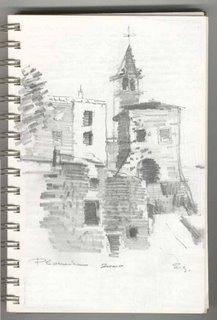





The origin of the name of the city - "Pula"
The written news of Alexandrian Hellenistic poets Callimachus, Lycophorn and Apollinius Rhodius from the 4th and 3rd centuries BC spoke of the existence of a "city of exiles" on Pula bay, Polai, besed on the earlier myth of jason and Medea.
On the Illyrian river the oars came to rest
by the gravestone of pale-haired Harmonia-Snake,
a city was found: a Greek might have called it
- "A city of Refuge"
but in their language they named it Polai
The earlist name for the Roman colony is mentioned by Pliny the Elder in his work Naturalis Historiae: In colonia Pola, quae nunc Pietas Iulia.
excerpt from: "Pula", Vesna Girardi Jurkic, Pula, 1986
also - important literature on issue:
1. Pula, Zagreb, 1964
2. Anticka svjedocanstva o Istri, Mate Krizman, 1997, Zakan Juri, Pula
3. Bizant i crkveno graditeljstvo u Istri, Ante Sonje, Rijeka 1981
Drawings in order of aperance:
1. Front page
2. Nezakcij - dwelling next to Pula discovered in late '70.
3. Nezakcij - Early Christian Basilic
4. Plomin - lat. Plomona - East cost of peninsula
5. Portrait
6. Plomin, Plomona - detail

No comments:
Post a Comment